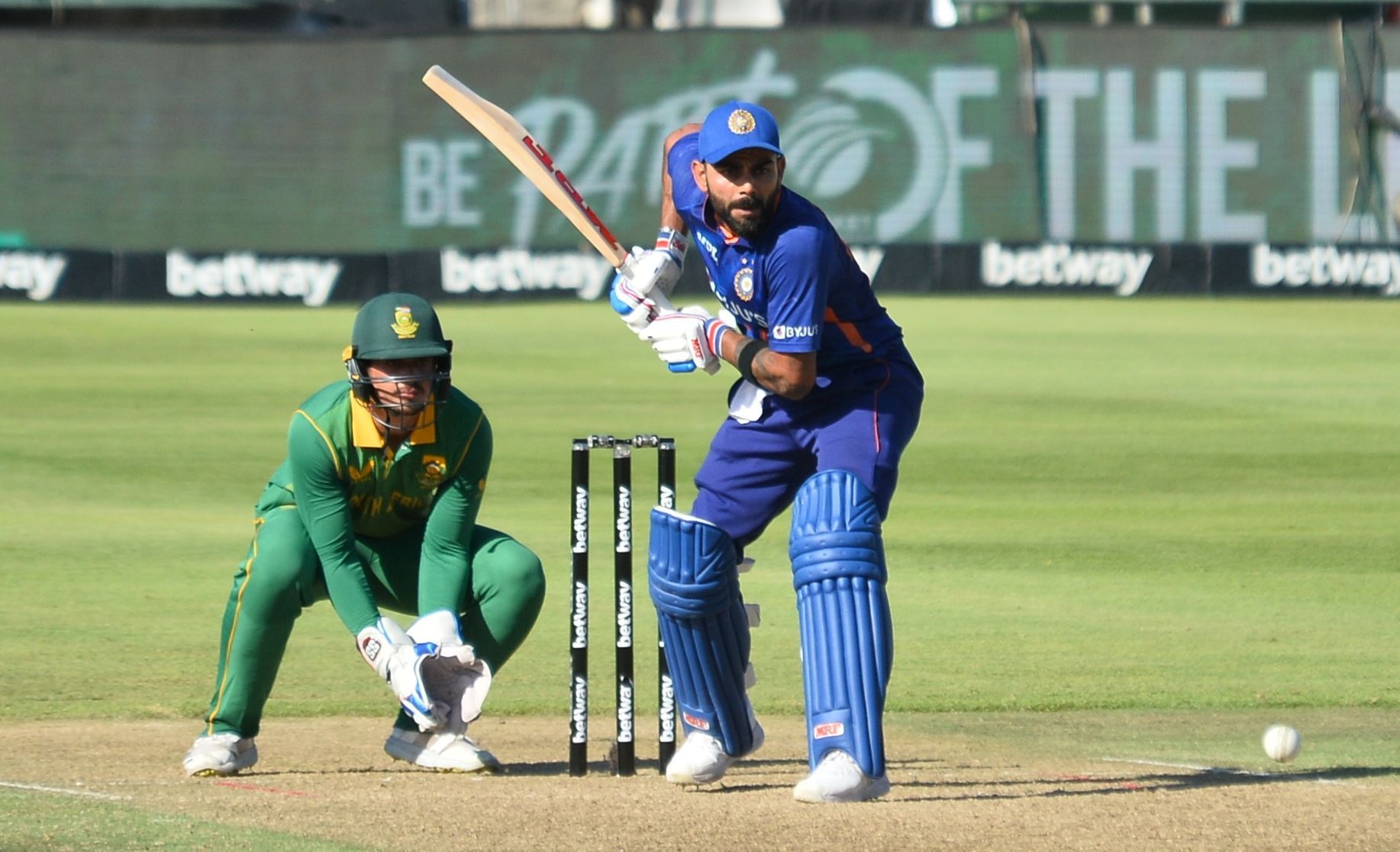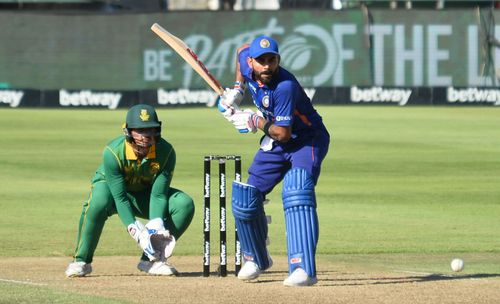
Indian cricket team learning that too many anchors sink the ship

Over the years, the term "anchor" has been used more often than you can remember, especially when talking about the Indian cricket team and its white-ball fortunes. Historically, it has aided the Indian cricket team too, considering its brand of cricket married perfectly to what an anchor does.
For all intents and purposes, ODI cricket was treated as a shortened version of Test cricket, rather than an elongated iteration of the shortest format, meaning that the anchor, which plays an enormous role in red-ball cricket, always remained at the top of the wish list.
In recent times, though, teams (apart from India obviously) have tended to move away from deploying anchors in white-ball cricket. England are perhaps the greatest example of this change in tack.
While Joe Root, largely described as someone who acts as a glue in the middle order, continues to be an ever-present in the Three Lions’ set up, his inclusion is as much an aberration rather than the norm England follow.
India, on the other hand, have resisted the temptation to move away from a model that has served them brilliantly in their white-ball cricketing history, meaning that the likes of KL Rahul, Rohit Sharma, Shikhar Dhawan, Shreyas Iyer and Virat Kohli, more often than not, form a part of their playing eleven.
To an extent, the presence of such gifted players, who not only know how to knuckle down but can also increase the tempo, has helped the Indian cricket team adapt to different conditions, and of course, succeed.
Yet, as the recent series against South Africa showed, it could have an adverse effect on the side too. Not just because the impact of similarly-moulded players could have a counter-productive effect, but also because the ODI game, in addition to the T20 format, has changed significantly since anchors were in vogue.
The Indian cricket team struggled with the bat in South Africa
In the recently concluded rubber against the Proteas, the Indian cricket team batted first on a solitary occasion. On a pitch that was relatively flat, they simply couldn’t understand how many runs would serve their purpose. In that process, Rahul single-handedly brought the essay to a grinding halt and ensured that the momentum was completely arrested.
The 1st ODI saw the Indian cricket team chasing a slightly above-par total. For much of that run-chase, they seemed in control, with Dhawan and Kohli notching up half-centuries. As soon as the pair fell in quick succession, though, the visitors seemed devoid of answers and ideas.
A lot has been made of the middle order’s struggles in establishing a foothold. There is a bit of truth to it too. But the top order, apart from scoring pretty half-centuries, didn’t really help out the middle order.
When Dhawan departed, the Indian cricket team required more than run-a-ball, despite starting off the run-chase requiring 5.94 runs per over. A few overs later when Kohli was dismissed, the required run rate had spiraled to 6.7 runs per over.
In the 3rd ODI, the Indian cricket team invited pressure onto themselves with their archaic batting in the Power Play and in the middle overs. They required 288 at 5.76 runs per over but they scored only 50 runs during the field restrictions. When Dhawan perished, the visitors needed more than a run-a-ball. Similarly, at the time of Kohli’s dismissal, the required run rate had jumped up to 7.2.
There might be a temptation to label these performances as a deviation from a well-established pattern. But the bare fact remains that these knocks were probably match-losing essays.
Not only did they make things tougher for those around them, they couldn’t capitalize on the deliveries they had chewed up earlier. In simpler words, this is the worst-possible scenario when batting.

Since the start of 2020, the Indian cricket team batters have racked up 42 scores of fifty or more. 23 of those have come in a losing cause. Alarmingly, there have been eleven innings where batters have scored fifty or more at a strike rate below 90, indicating that there hasn’t been a lot of tempo attached to those essays.
Dhawan and Kohli feature quite regularly in that list too. While the latter’s name can be found five times, the former finds a place three times. Of these eight instances, the Indian cricket team has only won once (at Canberra in 2020).
That, though, was down to Hardik Pandya and Ravindra Jadeja’s heroics, rather than Kohli’s innings. If anything, the Men In Blue won that game despite the sluggishness of the former Indian captain, as opposed to winning because of it.
The other occasion where an Indian cricket team batter has registered a sub-90 strike rate fifty and emerged victorious was at Colombo in 2021 against Sri Lanka. Deepak Chahar was the batter in question but he remained unbeaten and guided a run-chase where the required run-rate was a tick over five when he walked out to bat.
Interestingly enough, that particular run-heist began at 5.52 runs per over – a required run-rate that was brought down by Manish Pandey and Suryakumar Yadav, owing to their briefly effervescent but immensely selfless knocks.
Basically, Chahar was allowed to bat in that fashion because those above him had made the prevailing situation easier. In South Africa, the top order made an already under-fire middle order’s job tougher.
At the other end of this particular spectrum are England – an outfit that has long shelved the idea of having a designated anchor throughout an innings. In the same aforementioned period, they have had 28 scores of fifty or more. 12 of those have been in a losing cause and only five of those have come at a strike rate below 90. Of the five sub-90 strike rate innings, three have led to losses. But that still makes up a very low percentage.
For those with a mathematical inclination, 42.8% of the times an English batter has scored fifty or more, they have lost. India, meanwhile, have lost 54% of the times a batter has scored fifty or more.
In essence, England are benefiting when their batters are batting for long periods, whereas the Indian cricket team are arguably suffering when their batters set their stalls out for a longer haul.
As things stand, the Indian cricket team seems to have too many anchors in the mix and that is directly contributing to their ship sinking regularly. Kohli, till a few years ago, rarely failed to cash in after a sedate start. Now, he has developed a habit of consuming deliveries before getting stuck in the middle overs (both in T20Is and ODIs).
Similarly, Dhawan seems to have lost the knack of converting his starts into big hundreds. Rahul, meanwhile, seems to get confused whenever there are more overs to bat. In the middle order, there is only one way he can bat but at the top, he is seemingly getting restricted by the extra responsibility.
The only anomaly then is Rohit. Not because he races out of the blocks (on the contrary, he is one of the slowest starters), but because he can capitalize in the middle overs and ensures that he makes his sluggish starts count.
The other domino effect is felt by the likes of Rishabh Pant and Suryakumar. Both are free-flowing batters and get dismissed while attempting audacious strokes. Many are quick to label them overrated and irresponsible. That they have no other option but to play in this manner, especially because of the trouble the top order has invited, is barely taken into consideration.
Before assuming the full-time reins of the T20I side, Rohit was quick to suggest that he wanted his teams to have huge ambitions even if they lost early wickets. The idea seemed to have permeated through the Indian cricket team’s ranks against New Zealand. That it came after a dismal and conservative campaign under Kohli at the T20 World Cup illustrated that the Indian cricket team were embracing change.
From that perspective, they find themselves at a similar crossroad. Not only has their approach to ODI cricket been brought under the scanner, there is a real question mark over the tenability of the personnel they have been deploying lately.
Having said that, these tweaks will not materialize overnight and there could even be a situation where things get a lot worse before they can get better. The important part is that the new regime adopts the new tack and starts treating ODI cricket as an elongated version of T20 cricket.
The Indian cricket team has fallen back on its conservative roots in ODI cricket at the drop of a hat, and has unsurprisingly seen England steal a march on them as the premier white-ball outfit on the planet.
Hence, if the new regime can bring about a change in mindset, it might go a long way in establishing their legacy and of course, in casting the Indian cricket team as the favourites for the upcoming 2023 ICC Cricket World Cup.
If that doesn’t happen, the Indian cricket team might just be guilty of letting the ODI game pass them by. And that, considering the talent and the emphasis on white-ball cricket in the country, wouldn’t sit right.